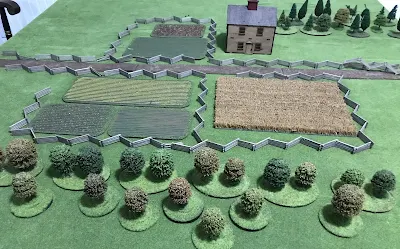Lieutenant-Colonel Francis Rawdon had the job of defending the South Carolina Backcountry. His description of the strategic situation deserves to be quoted at length:
"Having been left in the command of the back country when Lord Cornwallis [i.e., Lieutenant-General Charles Cornwallis] went to Charlestown, I had (by my spies) kept a vigilant eye over the force which was collecting in North Carolina for the invasion of our newly acquired territory. Though Lord Cornwallis had not thought it probable that the attack would be made upon south Carolina till the violent heat of the summer should be passed, I had suspected that Gates might count on our inability to stand the climate (especially as it was known that we were very sickly) and might then make a speedier effort. I had on that account minutely examined the country and formed my eventual plans. Camden had from the first day appeared to me an objectionable station for the army. It was a false position relative to the country, and in itself indefensible beyond any ground that I ever saw. On learning that a body of the enemy's militia had advanced to the Pedee [i.e., the Peedee River in the northeastern part of the state], I considered it a sure indication that Gates would move immediately. I therefore detached [Lieutenant-Colonel James] Webster, a good and gallant officer, to the east branch of Lynche's Creek and I reinforced a post which I had at Hanging Rock. As soon as I had made the necessary arrangements at Camden, I followed Webster. Of distances, I must speak loosely. I suppose the point where the road crosses the east branch of Lynche's Creek to be thirty miles from Camden; the post at Hanging Rock, thirty-five. There was a ready communication between the two by a road of about twelve miles. My object in taking this forward position was to retard the progress of Gates' till Lord Cornwallis should collect force from other parts of the Province, or to reduce the enemy to hazard an action where my peculiar advantages of situation would compensate for my disparity in numbers. I had 1100 men with me, all regulars or provincials; the detachment at Hanging Rock consisted of 400 provincials and 800 militia. The latter was a requisite post, because Sumpter menaced that road to Camden with a corps of militia. Gates came opposite to me.”

















